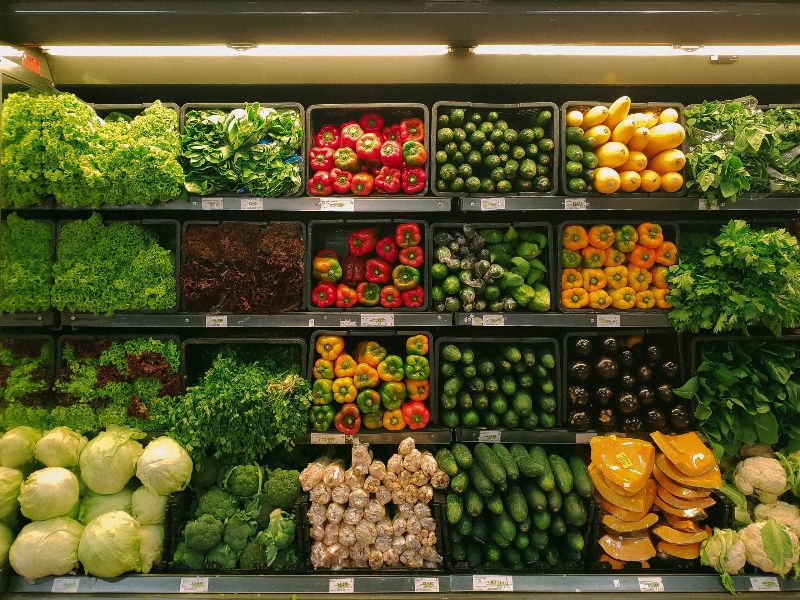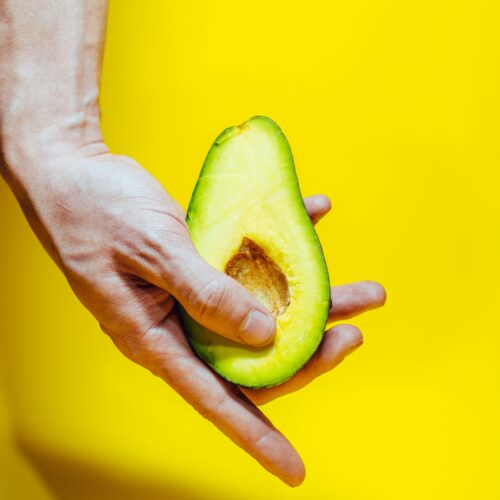
Did you know that our earliest, pre-homo sapien, ancestors ate about 100 grams of fiber per day? That makes getting the recommended 28-34g per day seem pretty easy, right?
A few years ago Shane and I tried the 100g fiber challenge with the condition that you couldn’t increase your caloric intake. Very tough to do. Out of the 7 days I only hit about 100g two times. Even healthy, high-fiber foods like avocados just had too many calories. Our early ancestors ate huge amounts of tubers/roots to get enough calories so it was a lot different back then.
But we largely share the same digestive track so aiming for more than the recommended daily intake of fiber is probably a good idea.
When it comes to fiber, there are more ways to eat them than just chomping on some prunes. (Which also totally might not be your thing to begin with.)
And, the best part about high-fiber foods are the benefits. When you’re getting enough fiber in the day, you’re likely to be more regular, meaning you’ll be hitting the bathroom with ease and consistency, just like you should.
When you’re not eating enough fiber, you run the risk of getting constipated (as your digestive system isn’t running as smoothly and efficiently), and it could also result in painful poops and abdominal distention, or bloating, that might seem to never go down. Not fun.
So, by stocking up on fiber-filled foods, your gut remains happy. (Which then makes us happy, too.)
And, an added bonus—fiber can also takes up space in our bellies to make us feel satisfied after meal, so we stop over-indulging or mindlessly eating during the day.
Win-win.
Here are a few top picks that are packed with fiber, as well as a few other essential nutrients, like protein and healthy fats.
Pro Tip: Add some of these high-fiber foods to your Zenberry smoothies for a delicious, well-balanced meal.

BERRIES
Here’s more reason to add a handful of berries to your morning yogurt. Not only are they delicious and sweet, but they also are high in fiber to keep things moving.
“Blackberries and raspberries are a surprisingly great way to get your fiber intake up. Raspberries actually have the highest fiber-to-calorie ratio of any food! Both contain approximately 8 grams of fiber per cup full,” says Dr. William E. Newsome, M.D. Add them to your next Zenberry Greens smoothie, or freeze them and enjoy as a cool, refreshing snack.
BEANS
Beans aren’t just a great plant protein option, but they also are high in fiber. So, while you might get a bit gassy when eating them, it’ll pay off once you hit the bathroom later on.
“I love using beans for snack time. Bean dips can be bulk prepped and go great with whole grain crackers or baked tortilla chips,” says Carolina Guizar, MS, RDN, CDN.
Here’s a recipe for fava bean dip: To serve three 1/2 cup servings of dip, each with 5 grams of fiber, try this. “Purchase a 15-ounce can of fava beans, drain and add to a food processor. Add 1 clove of raw garlic, 1 tbsp of fresh lemon juice and 2 tbsp of grated Pecorino Romano. Pair with whole grain crackers for a crunchy kick,” she says.
And, another option with black beans? “Blend 15-ounces of drained black beans with a sprinkle of cumin and chili powder for added flavor. This will yield three 1/2 cup servings with 6 grams of fiber in each serving. Top with a store-bought pico de gallo, fresh cilantro and cotija cheese or queso fresco. Baked tortilla chips will be the perfect accompaniment for this dip,” she says.
BEETS
There’s more to beets than just their pretty, red hue. Turns out, beets are loaded with fiber to fill you up.
For a 1 cup, it’s only 58 calories, 13g carbohydrates, and 4g of fiber, says Tanya Zuckerbrot MS, RD, NYC-based Registered Dietician, bestselling author, and founder of The F-Factor Diet.
Here’s how to enjoy them. Beet salad: Boil fresh beets then slice into cubes, add fresh arugula and grated Parmesan cheese, and lastly, dress lightly with olive oil, balsamic vinegar, salt and pepper, says Zuckerbrot. Yum.
CAULIFLOWER
Cruciferous veggies might make you toot, but all that tootin’ is good for you. It means that fiber is working!
For a typical serving size of a medium head 5-6” diameter of cauliflower, it comes in at 147 calories, 29g carbohydrates, and a whopping 12g of fiber, says Zuckerbrot.
A few ways to cook with them? Make a homemade cauliflower pizza crust, says Zuckerbrot. It’s a delicious and high fiber pizza, without the excess carbs.
Or, try cauliflower fried rice, where you skip the carb-heavy, sodium laden fried rice take-out you’re used to and whip up your own healthy version on the fly, she recommends.
ARTICHOKES
Get this: 1 medium artichoke (128 g), which has only 60 calories and 13.5 g carbohydrates, gives you a heaping 7g of fiber, says Zuckerbrot. Score.
“One of the simplest and most delicious ways to enjoy artichokes is to boil them with ½ a lemon, drain, and then enjoy,” she says.
“Pull the leaves off the artichoke, and scrape the meat off the leaf with your teeth. Once you are out of leaves, use a spoon to scrape the spiky hair off the artichoke heart,” she explains.
And, you can always just roast artichoke hearts with some olive oil for an easy no-fuss side dish, she says. If you’d like to see some more amazing, delicious, healthy recipes check out the recipe pages on this site as well as the weekly Feeding Success Meal Plans. You can also get a free 30 min health & nutrition coaching with Emma to get you started on your Health Transformation journey.



